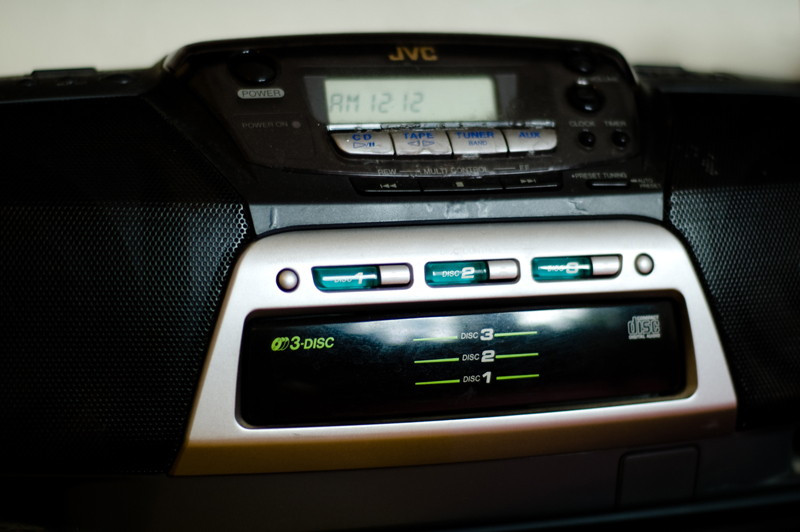What’s the frequency, Kenneth?
Adaptation to Internet a sign of a healthy radio market, say experts
Winnipeg’s FM radio dial is packed with 23 commercial radio stations, and some are changing formats and on-air personalities in an effort to woo listeners.
Hank 100.7, a country station, changed to rock this summer. Curve 94.3 recently changed to an all-Christmas music format until the new year.
Sharon Taylor, general manager for Hot 103 and QX 104 notes that changing formats is like starting all over.
“(It’s) only done as a last resort if the format a station currently has is just not doing well enough for the owners to make a profit,” said Taylor.
Garry Moir, instructor in radio broadcasting at Red River College, agrees and adds that radio is fiercely competitive.
“Every station is trying to come up with a format and programming to generate an audience,” said Moir. “The bigger the audience, the more advertising money the station can attract.”
CJOB generates the largest portion of Winnipeg’s radio market, at 15 per cent, according to the 2009 ratings from BBM Canada, a not-for-profit industry organization that provides data on who is tuning in.
Hot 103 and CBC each captured the attention of just over 11 per cent of Winnipeg’s listeners. QX 104, 92 CITI FM and 99.9 BOBFM each accounted for anywhere between seven to eight per cent of ratings.
Elmer Hildebrand, CEO of the rural Manitoba Golden West Broadcasting group and former chair of the now-defunct Canadian Association of Broadcasters, agrees that station format changes are market driven and done in response to changes in listener tastes.
“ The website is an integral part of the radio station now, with more stations providing podcasts and the option to listen online.
Garry Moir, radio broadcasting instructor, Red River College
“Every station is trying to get that edge as music tastes change and new music comes up,” he said.
Not only are stations changing formats, but they are also changing staff and on-air personalities. Hal Anderson, a familiar voice on Power 97’s morning show, now hosts CJOB’s morning show.
Taylor is confident these recent firings are not a sign of Winnipeg’s ailing radio market, which was worth just over $29 million in revenue in 2009, according to the Canadian Radio-television and Telecommunications Corporation.
“I don’t believe there is a higher turnover rate in station formats, or on-air people in Winnipeg than in other similar sized markets in Canada,” she said.
Hildebrand agrees and adds that these format and staffing decisions are not made lightly.
“Changes like these are informed by market research and media focus groups into what listeners want,” he said.
Garth Buchko, general manager of Corus Entertainment, which houses CJOB, Power 97 and Groove FM, notes that Winnipeg’s radio market is thriving.
“Radio revenue has grown by over seven per cent in the last four years,” he said. “In the last 12 months, ending in August 2010, Winnipeg had an outstanding revenue growth year, growing by just over four per cent over the previous year.”
There will continue to be changes into the future, notes Moir, as radio stations adapt to not only changing music tastes but also new technology like Internet broadcasting.
“The website is an integral part of the radio station now, with more stations providing podcasts and the option to listen online.”
Published in Volume 65, Number 14 of The Uniter (December 2, 2010)







